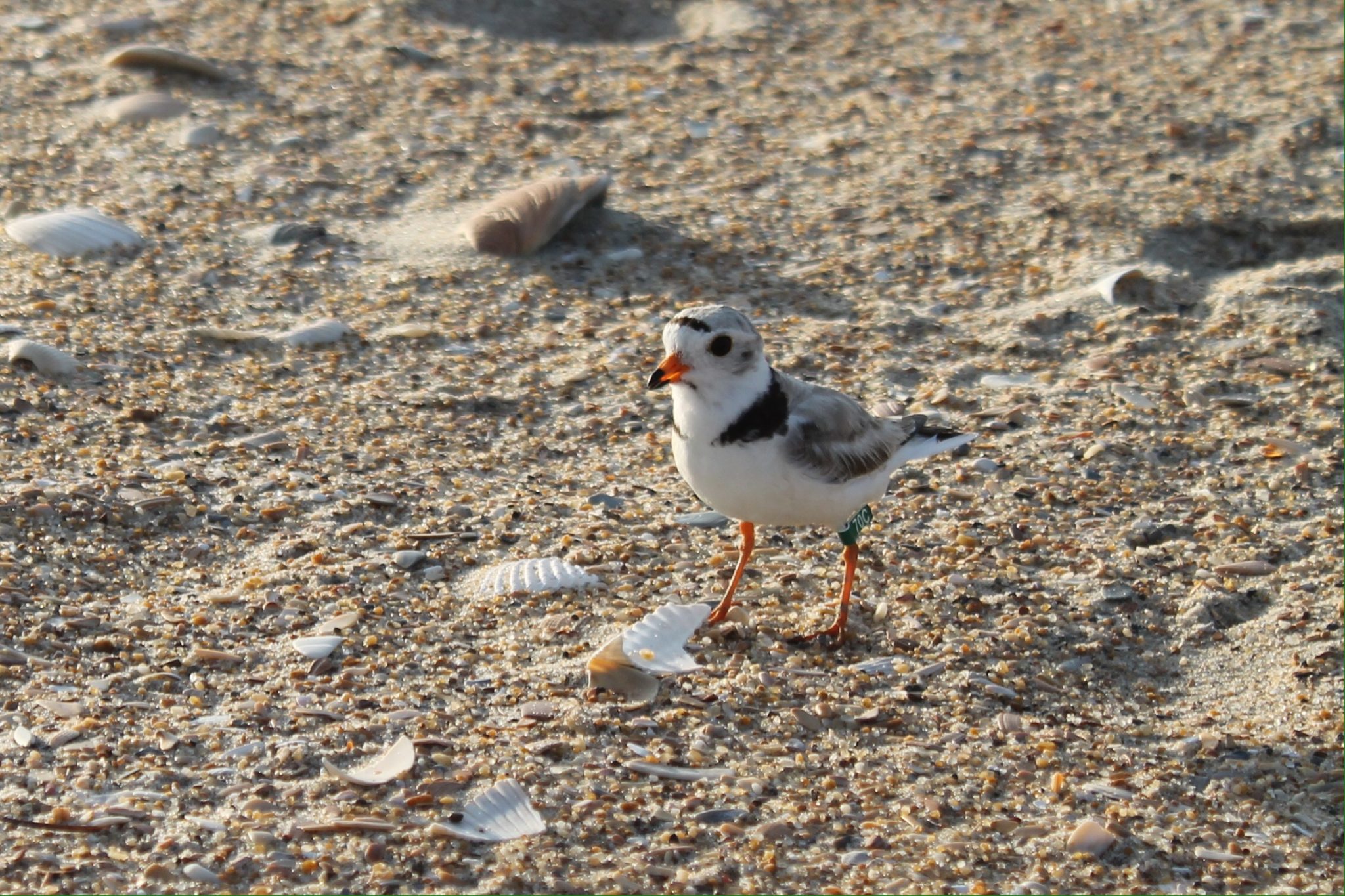The barrier islands of North Carolina’s Cape Hatteras National Seashore are among the most popular recreational destinations on the Atlantic coast. Park managers strive to integrate the needs of wildlife with recreational use of the area’s beaches, but in some cases, they impose restrictions on the latter in order to preserve the former—sometimes even completely closing portions of beaches to pedestrian and off-road vehicle traffic to protect nesting birds. These closures are controversial, but a new independent report from the American Ornithological Society (AOS) finds evidence that despite complaints from the public, they provide significant benefits for vulnerable beach-nesting birds and sea turtles.
Two such beach-nesting birds—the American Oystercatcher and federally threatened Piping Plover—are of particular concern to Park managers. Populations of both species at Cape Hatteras declined in the late 1990s and early 2000s. The plover population recovered to pre-decline levels, whereas the oystercatcher population did not. In 2016, in response to the ongoing controversy over beach closures in the park, the National Park Service asked AOS to assemble an expert panel and produce an independent report assessing the appropriateness of the current NPS beach management plan.
Two factors that determine whether a population of shorebirds grows are carrying capacity (how many individuals the existing habitat can support) and productivity (how many young are produced). According to the report, carrying capacity for the two shorebird species has been reduced due to disruption of barrier island dynamics by human structures and activities, but the National Park Service has limited options for boosting carrying capacity. However, Park managers do have options for increasing productivity.
Productivity is influenced by factors including predation and human disturbance, both of which have contributed to past shorebird declines. The presence of humans can indirectly increase the risk to birds from predators such as raccoons, which are initially attracted to human trash and then stick around to raid nests. Wildlife managers might be able to boost productivity by removing more predators from the local ecosystem, but that doesn’t mean that beach closures can be scrapped in favor of increased predator control. The report also found that the controversial beach closures, though not sufficient on their own to increase productivity enough for populations to grow, appear to be necessary for maintaining productivity at its current level.
“Overall, we found the Park’s management of beach-nesting species, which include sea turtles and colonial terns and skimmers as well as the two shorebirds, to be appropriate, although some Park objectives should be reevaluated in light of recent research,” says Jeff Walters, lead author of the report. “There is ample evidence of the benefits of restrictions on pedestrian and off-road vehicle activity to protect beach-nesting species, although this is just one of several factors important to the success of these species at Cape Hatteras National Seashore.”
The full report, which was prepared by The American Ornithological Society Committee on Science Arbitration, can be found here: Evaluating Past and Present Management of Beach-Nesting Wildlife Species at the Cape Hatteras National Seashore by J.R. Walters, A.A. Dayer, S.J. Dinsmore, M.H. Godfrey, C.L. Gratto-Trevor, E. Nol, S.R. Riggs.
###
